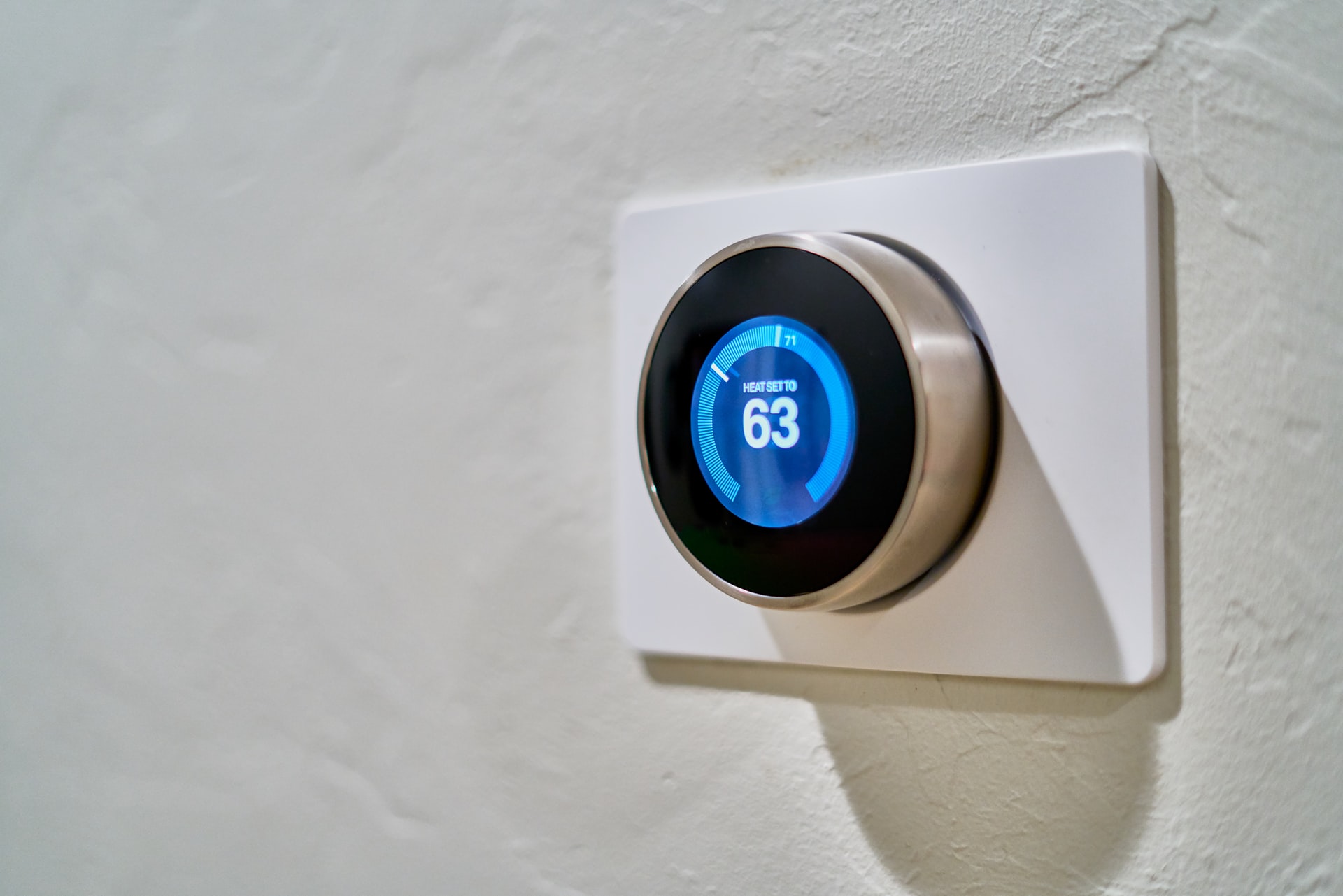Ecobee vs Nest smart thermostats: what are the big differences?
Only a few key differences separate Ecobee vs Nest, but in the battle of the smart thermostats, which is right for you?


You are probably familiar with the term smart home already. These residences use internet-connected devices to automate everyday tasks or make them easier. Devices often “talk” to one another to pool data and make their behaviors and responses to triggers even more accurate.
One of the first steps homeowners can take to make their homes smarter is installing one of the best smart thermostats.
The most recent Energy Information Administration data says Americans pay, on average, $115 per month for electricity. Not surprisingly, heating and cooling costs are almost everybody’s highest residential expense and nearly 40% of all electricity use in the country.
That makes conserving energy while running heating, cooling and air conditioning (HVAC) systems extremely important. Reducing electricity demands has become necessary, from both a checkbook-balancing point of view and an eco-conscious one.
Can smart thermostats help? What do they do – and how can you decide which one to buy, such as choosing between Ecobee vs. Nest?
What Are Smart Thermostats?
Smart thermostats are often renters’ and property owners’ first steps in introducing automation into their daily lives. Their primary identifying characteristics are:
- Wi-Fi radios for internet connectivity
- Climate awareness using temperature and humidity sensors
- Occupancy sensors – usually passive infrared (PR)
Smart thermostats are designed to accomplish the following:
The Livingetc newsletters are your inside source for what’s shaping interiors now - and what’s next. Discover trend forecasts, smart style ideas, and curated shopping inspiration that brings design to life. Subscribe today and stay ahead of the curve.
- Automation: Occupancy sensors learn when people are likely to come and go and adjust the temperature in each climate zone within the home accordingly, without human input.
- Energy savings: There’s no need to turn the HVAC system on and off manually. Smart thermostats will lower the heating or cooling settings when the system isn’t needed and start them again when they are. This saves energy and money.
- Convenience: Not having to think about programming or adjusting the thermostat is a big selling point. Combining internet connectivity with occupancy awareness means these devices perfectly balance outdoor conditions with occupant comfort.
Smartphones and tablets serve as the primary means of control for these products when adjustments are needed, although some people prefer voice commands.
Anyone interested in buying their first smart thermostat should start with Energy Star’s product and rebate finders. Energy Star-certified products receive independent certification for their energy savings claims.
It’s also important to note that any savings you expect to wring out of this investment could be negated entirely if your home is drafty, your window treatments aren’t climate-appropriate or your HVAC system requires maintenance.
Nest vs. Ecobee: What You Should Know
Many people who are new to smart homes find themselves torn between the Nest and Ecobee thermostats. After all, these two well-established product lines.
What’s Your Budget?
The flagship products from both brands cost $249.99. They are:
There are sometimes sales, but these are usually retailer-dependent and hard to predict. You may be able to find less-expensive legacy models, but these aren’t necessarily recommended since they may not receive firmware updates for as long as a newer model.
There’s no clear winner here. Neither product comes with subscription fees and the thermostats’ companion apps for mobile devices are free.
How Hard Is Installation?
Both products require about the same amount of know-how to install. You’ll need to remove your existing thermostat, disconnect four or five wires, connect them to the new model and mount it to the wall. If you can follow important instructions – like shutting the power off before messing with electricity – you’ll do fine with either one.
Consider this important distinction between the two products, however:
- Ecobee’s SmartThermostat must be physically wired to the house for power when it’s installed.
- Nest’s Learning Thermostat presents the option of being wired for electricity or functioning off an onboard battery.
Other wires must be attached other than the power connection for both devices. However, it’s easy to see why Nest’s ability to run off a battery would be attractive.
What Are the Defining Physical and Functional Characteristics?
Ecobee’s SmartThermostat features a touch screen, an intuitive input for anybody familiar with smartphones.
It comes with a SmartSensor that’s useful if the existing thermostat placement doesn’t indicate where people are most active. The product ecosystem also offers wireless satellite temperature sensors for individual rooms.
The device has a scheduling assistant for easy automation, and it delivers HomeIQ reports with insights about how occupants are using energy.
Nest Learning Thermostats feature a physical dial instead of a touch screen. This provides a more familiar and tactile experience that some appreciate.
Like Ecobee, the Nest hardware/software ecosystem offers additional room sensors. It can also detect the occupants of a room, regardless of distance from the thermostat.
Nest learns trends and patterns over time and provides monthly reports showing how different variables, like weather, impact climate control and energy use.
Both products are intuitive to use and provide a similar experience in terms of changing the settings, automating HVAC settings and peering into the data gathered over time. The data-gathering and the reports generated by both products are focused on finding opportunities to reduce residents’ electricity bills.
What Technology Do You Already Use?
No matter what kind of heating distribution system you have in your home, both of these smart thermostats will work with it.
It’s important to explore the concept of software ecosystems fully. Suppose you’ve ever debated the merits of Android vs. iOS or macOS vs. Windows. In that case, you have an understanding of the perks and drawbacks of investing in a specific hardware/software ecosystem.
Ecobee products are compatible with Google Assistant, Amazon Alexa and Apple HomeKit.
Nest products are compatible with Google Assistant and Amazon Alexa.
Compatibility with these other product ecosystems allows you to use your voice to adjust the temperature to Nest Hubs, Apple HomePods and Amazon Echo devices if you have them. They’ll then relay your commands to the thermostat.
If compatibility with Apple’s iOS and HomeKit products is important to you, you’ll need to go with Ecobee. Otherwise, in terms of compatibility with the smartphones and smart home gadgets you may already own, it’s a toss-up between them.
The Ecobee and Nest thermostats work alongside home ventilators to substitute fresh outdoor air for conditioned air as often as possible. They also interface with whole-home humidifiers, if your home has one.
How Much Energy Will You Save?
Both brands provide expected energy savings, which they say were calculated by independent parties. Ecobee claims its flagship product should save users up to 26% on their annual energy costs. Nest says users should save 10%-12% on heating and 15% on cooling.
Smart Thermostats: Gateways to Your Smart Home
For many, an Ecobee or Nest product investment is the first step toward making the entire house smart. Don’t be surprised if you end up making incremental investments in satellite products from both brands, as well as other smart home products – like doorbell cameras and lighting.
Of course, these are not the only two brands in the smart thermostat or smart home technology race. In fact, the intensifying competition makes it difficult to choose a product – except in cases where you may have specific, individual needs. If you need HomeKit support or you want the capability to run off a battery, you’ll need to choose a little more carefully.
Other than those few caution points, you’re likely to find your smart thermostat a worthwhile and enjoyable purchase no matter which brand you choose. Buying it will set you back, but the investment should pay dividends over time, assuming other fundamentals of a comfortable home, like keeping drafts away, are accounted for first.
Shannon L. Flynn is a business technology & entertainment journalist with more than five years of experience writing in the technology industry.
She is a staff writer at MakeUseOf and Lifehacker, and is the managing editor of ReHack Magazine. She has contributed to a number of online publications, including Hackernoon, EdTech Magazine, GamesRadar, SiliconANGLE’s The Cube, ReadWrite, Fansided, Lifewire, and more.
She loves decoding security jargon, explaining business processes, and tinkering with popular tech devices.
When she's not writing, she can be found playing video games, watching her favorite Twitch streamers, and lounging with a good book (most likely a Mac).
